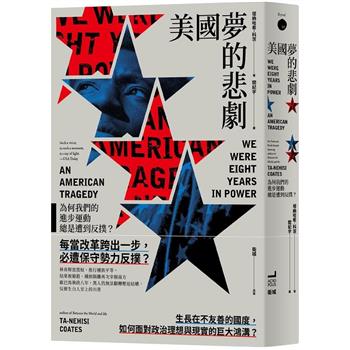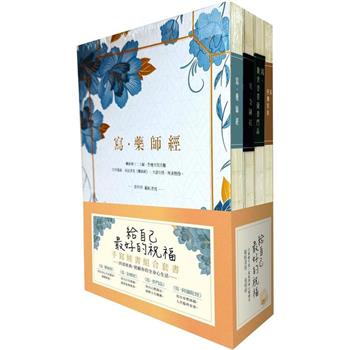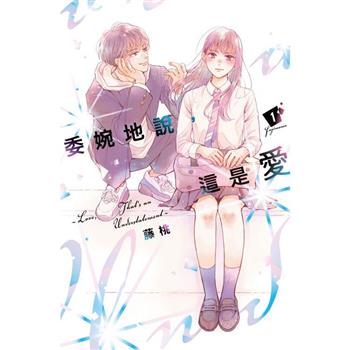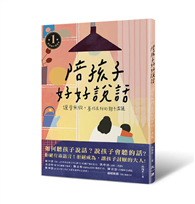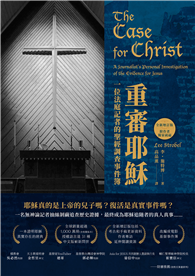| FindBook |
|
有 13 項符合
Michael O’Neill的圖書,這是第 2 頁 |
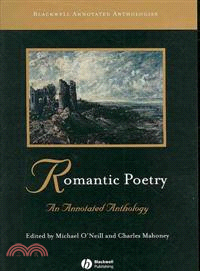 |
$ 3116 ~ 3897 | Romantic Poetry - An Annotated Anthology
作者:O’Neill,Michael(EDT)/Mahoney,Charles(EDT) 出版社:Blackwell Pub 出版日期:2007-09-26 語言:英文 規格:平裝 / 471頁 / 2.5 x 17.1 x 24.1 cm / 普通級  共 2 筆 → 查價格、看圖書介紹 共 2 筆 → 查價格、看圖書介紹
|
|
|
- 圖書簡介
Easily adaptable as both an anthology and an insightful guide to reading and understanding Romantic Poetry, this text discusses the important elements in the works from poets such as Smith, Blake, Wordsworth, Coleridge, Southey, Barbauld, Byron, Shelley, Hemans, Keats and Landon.
Offers a thorough examination of the essential elements of Romantic Poetry
Highly selective, the text examines each of its poems in great detail
Discusses theme, genre, structure, rhyme, form, imagery, and poetic influence
Helpful head notes and annotations provide relevant contextual information and in-depth commentary - 作者簡介
Michael O’Neill is Professor of English at Durham University. He is currently a Director of the University’s Institute of Advanced Study. He has published books, chapters, and articles on many aspects of Romantic and twentieth-century poetry, and received a Cholmondeley Award for Poets for his own poetry in 1990. His latest monograph is The All-Sustaining Air: Romantic Legacies and Renewals in British, American, and Irish Poetry since 1900 (2007).
Charles Mahoney is Associate Professor of English at the University of Connecticut, where he is also currently the Associate Director of the University of Connecticut Humanities Institute. He has published on a number of Romantic writers, including William Hazlitt and Leigh Hunt, and is presently at work on a project entitled Revolutionary Measures: Romanticism, Formalism, Criticism. - 名人/編輯推薦
"This poetry anthology is impressive because of its carefully lucid headnotes and footnotes, its thematic contents lists and its textual reliability, all of which are a very high order." (BARS Bulletin & Review, July 2008)
"The editors have a particular commitment to the role that an appreciation of poetic form can play in critical understanding, and it is on account of this formal detail that the anthology is so valuable. Introductory headnotes elucidate the subtleties of each poem's craft, while footnotes comment on line endings, rhyme patterns, and other features of the text. Some comments are so brilliantly incisive as to deserve separate publication, such as the account of the metre of Christabel: 'each line seems like a stealthy event' (p. 207). Without question, this is by far the best way that any reader could be introduced to these poets, and the anthology is careful not to suggest that an attention to poetic detail precludes other types of investigation. Understanding how a poem creates meaning, however, is the vital first step, and for this reason Romantic Poetry: An Annotated Anthology will doubtless be the standard teaching anthology for many years." Year's Work of English Studies (2010)
"Romantic Poetry is the ideal anthology for students and specialists alike, defining a new canon of ten Romantic poets and reflecting the full diversity of Romantic poetic forms. All readers will welcome the freshly-edited texts, the authoritative headnotes and annotations, and the thought-provoking introduction. Edited by two leading scholars of Romanticism, the new Blackwell anthology of Romantic poetry will be the first choice for the classroom, library, and private study."
–Nicholas Roe, University of St Andrews
"This is a welcome and usefully up-to-date new anthology, providing, in a concise and manageable selection, a genuinely representative overview of the canon of romantic poetry, as it is comprised today by the works of poets of both sexes. O’Neill’s excellent introduction pulls off the difficult feat of offering, to the first-time reader or student, a coherent and accessible summary of its subject without being reductive or overly simplifying. The introduction is nicely complemented by the thematically divided list of texts, particularly user-friendly from the undergraduate point of view. Prefaces, which address both individual poems as well as each poet more generally, are critical rather than merely informative; the annotations too, are more detailed and explanatory than the more minimal glosses usually provided in comparable publications."
–Uttara Natarajan, Goldsmiths College, University of London - 目次
Selected Contents by Theme.
List of Plates.
Note on Texts and Editorial Method.
Index of Themes.
Chronology of Events and Poetic Landmarks.
Introduction: Romantic Doubleness.
Acknowledgements.
Anna Laetitia Barbauld, neé Aikin (1743--1825).
The Rights of Woman.
Inscription for an Ice-House.
To Mr. S. T. Coleridge.
Charlotte Smith, neé Turner (1749--1806).
Sonnet 1 ['The partial Muse, has from my earliest hours'].
Sonnet VII. On the Departure of the Nightingale.
Sonnet XII. Written on the Sea Shore. – October, 1784.
Sonnet XXX. To the River Arun.
Sonnet XXXII. To Melancholy.
Sonnet XXXIX. To Night.
Sonnet XLIV. Written in the Church-yard at Middleton in Sussex.
William Blake (1757--1827).
from Songs of Innocence and of Experience.
(from Innocence).
Introduction.
The Ecchoing Green.
The Lamb.
The Little Black Boy.
The Chimney Sweeper.
Holy Thursday.
Nurse’s Song.
(from Experience).
Introduction.
The Clod and the Pebble.
Holy Thursday.
The Sick Rose.
The Fly.
The Tyger.
Ah! Sun-flower.
London.
A Poison Tree.
Visions of the Daughters of Albion.
The First Book of Urizen.
The Mental Traveller.
The Crystal Cabinet.
William Wordsworth (1770--1850).
Lines written at a small distance from my House, and sent by my little Boy to the Person to whom they are addressed.
Simon Lee, the old Huntsman, With an incident in which he was concerned.
Anecdote for Fathers, Shewing how the practice of Lying may be taught.
Lines written in early Spring.
The Thorn.
The Last of the Flock.
The Idiot Boy.
Expostulation and Reply.
The Tables Turned; An Evening Scene, on the same subject.
Lines written a few miles above Tintern Abbey, on revisiting the banks of the Wye during a Tour, July 13, 1798.
The Ruined Cottage.
Strange Fits of Passion I have Known.
Song: 'She Dwelt among th'untrodden Ways'.
A Slumber did my Spirit Seal.
The Two April Mornings.
The Fountain, A Conversation.
Nutting.
Michael, A Pastoral Poem.
From The Prelude (1805), Book 1.
Resolution and Independence.
The World is Too Much With Us.
Composed upon Westminster Bridge, Sept. 3, 1803.
Ode (from 1815 entitled ‘Ode. Intimations of Immortality from Recollections of Early Childhood’).
The Solitary Reaper.
Elegiac Stanzas, Suggested by a Picture of Peele Castle in a Storm, Painted by Sir George Beaumont.
Samuel Taylor Coleridge (1772--1834).
The Eolian Harp. Composed at Clevedon, Somersetshire.
Reflections on Having Left a Place of Retirement.
This Lime-Tree Bower My Prison.
Kubla Khan.
The Rime of the Ancient Mariner.
Christabel.
Frost at Midnight.
France: An Ode.
The Nightingale: A Conversation Poem, April, 1798.
The Pains of Sleep.
Dejection: An Ode.
George Gordon, Lord Byron (1788--1824).
Stanzas to [Augusta].
[Epistle to Augusta].
Stanzas to the Po.
Don Juan.
The Dedication.
Canto 1.
Percy Bysshe Shelley (1792--1822).
Alastor; or, The Spirit of Solitude.
Hymn to Intellectual Beauty.
Mont Blanc. Lines written in the Vale of Chamouni.
Prometheus Unbound, Act I.
Ode to the West Wind.
Adonais: An Elegy on the Death of John Keats, Author of ‘Endymion’, ‘Hyperion’, etc.
Felicia Hemans, née Browne (1793--1835).
Properzia Rossi.
The Homes of England.
The Spirit’s Mysteries.
The Graves of a Household.
The Image in Lava.
Casabianca.
The Lost Pleiad.
The Mirror in the Deserted Hall.
John Keats (1795--1821).
On First Looking into Chapman's Homer.
The Eve of St Agnes.
La Belle Dame Sans Merci.
Ode to Psyche.
If by dull rhymes our english must be chain’d.
Ode to a Nightingale.
Ode on a Grecian Urn.
Ode on Melancholy.
Ode on Indolence.
To Autumn.
Bright star, Would I Were Stedfast as thou art.
Letitia Elizabeth Landon (L. E. L.) (1802--38).
Lines Written under a Picture of a Girl Burning a Love-Letter.
A Child Screening a Dove from a Hawk. By Stewardson.
Lines of Life.
Felicia Hemans.
Index of Titles and First Lines
|

